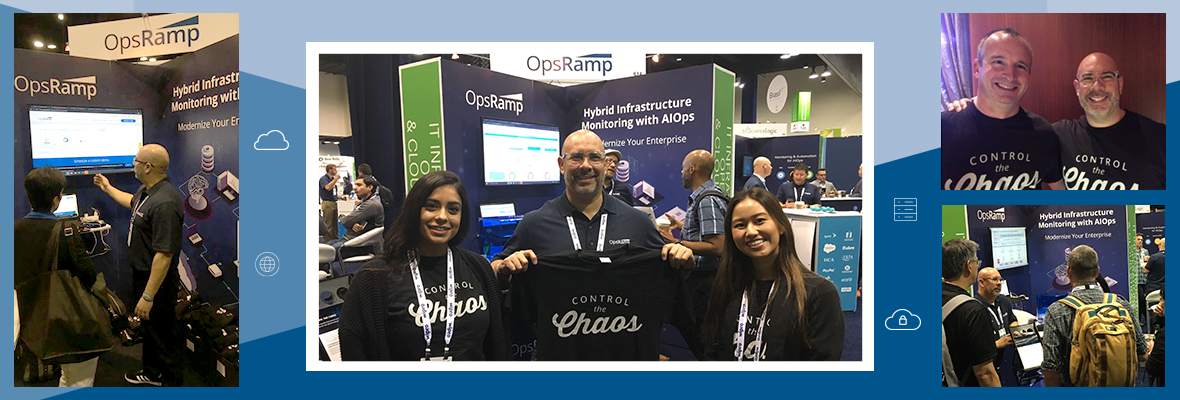There is no one-size-fits-all strategy for moving to the cloud. CIOs need to make sure that regardless of the strategy underway, they handle a few important mandates.
(The following is a reprint of the same article printed in DataCenter Knowledge.)
When CIOs are determining how to update a company’s infrastructure to be more responsive to business needs, they’re often thinking about the role of the cloud. And as they’re evaluating vendors, solutions, platforms and service providers, they might be wondering, what does my CEO want? Let’s face it, most CEOs could care less about the cloud. He or she simply wants to live in a world in which the IT doesn’t get in the way of making great ideas happen.
In many aspects, cloud computing can help satisfy that need. Done right, managing data, applications and the IT ecosystem in the cloud helps teams take advantage of new technologies, drive innovation and better serve the business. IT teams can work closely with business stakeholders on strategy instead of tinkering with servers and old technologies. That’s the definition of digital transformation, and it offers benefits both at the business level and technology level.
Businesses are spending more in the cloud, and in particular, the public cloud. Gartner predicts the worldwide public cloud services market will grow 18 percent in 2017 to $246.8 billion, up from $209.2 billion in 2016. In the enterprise, private cloud spending is falling and hybrid and multi-cloud environments are growing, according to Rightscale’s 2017 Cloud Computing Trends survey. These numbers aren’t surprising, since public cloud infrastructure is delivering the maintenance-free speed, availability and reliability that businesses expect. Say, for example, downtime occurs: IT can ensure that workloads automatically transfer to another data center (a.k.a. availability zone or region) within their cloud provider and keep the business service running regardless of disruption.
So even though CEOs don’t care much about AWS versus Azure versus Google, nor the difference between IaaS and SaaS, they do care about supporting the workforce, meeting business goals and delivering excellent customer experiences. They particularly love spending less on new servers, migrations and maintenance every few years. It’s the job of the CIO to determine how to enable this new environment, and at the same time, manage it appropriately to deliver the biggest bang for the buck.
As part of a two-part blog series – this being the first – we’ll be exploring business-driven cloud guidelines. The first article will focus on business goals for any cloud solution, and the second part will address key technical demands that serve the business. Together, they form the backbone of a cloud that CEOs are sure to love.
The CIO’s Promise to the CEO
So what sort of cloud is both CEO-friendly and gets the job done? CIOs might be mired in decisions about which cloud providers to use, which SaaS vendors to choose and legacy systems to jettison, and how to manage a hybrid cloud environment. There is no one-size-fits-all strategy for moving to the cloud. CIOs need to make sure that regardless of the strategy underway, they handle a few important mandates. CEOs need to be cost-conscious while also driving a low-risk competitive advantage. Those twin challenges will keep the CIO occupied, to start.
- Empower the business – but don’t get us into trouble: CIOs should be able to demonstrate how cloud computing can help the business quickly respond to and even anticipate customer needs, such as by enabling modern development capabilities like DevOps and on-the-fly development and test sandboxes. They should also show that cloud providers allow a business to scale up and down compute resources, according to demand. But while business people can buy in quickly to these benefits of the cloud, there are hidden issues that IT must mitigate. Ten years ago, a business unit had to open an IT request to get the supporting technology for a new application or integration. Yet now they can practically set it up entirely on their own, thanks to SaaS applications and public cloud servers, attainable with the corporate credit card and no installations required. However, the practice of shadow IT invites problems. CIOs must still know which applications are running and where, even when they run in another company’s data center in the cloud. They need governance in place to avoid duplicate apps and services and their related security risks. As well, there is the obvious issue of budget overruns, since IT is no longer reviewing and approving every technology purchase.
- Keep IT costs in control: CEOs want to know all about spending, and one of the major shifts in cloud computing is moving from CAPEX to OPEX. With on-premises and private cloud setups, there are significant fixed costs related to purchasing equipment and licenses. With the public cloud, that spending on internal equipment and the related management and maintenance costs decline dramatically: that’s music to the CEO’s ears. On the flipside, cloud spending fluctuates depending upon the number of instances running, usage, and required services: all of this is dynamic and sometimes unpredictable. Therefore, a company can be spending $20,000, one month and $100,000 the next month on infrastructure.
This variability makes executives crazy. If the environment is managed so that the annual spending is in line with the budget, then it’s fine. Otherwise, there’s going to be some explaining to do. Developers who used to be able to only set up one test environment at a time can now spin up 10 of them instantaneously. But the CIO may not know about developers gone wild until the bill comes and then it’s too late. Certainly, the major cloud providers offer tools to track usage, but most often those tools don’t show data in real time or provide context to this elasticity within the operations of the larger environment. Without that deeper insight, it’s tough for IT to prevent out-of-policy spending and shut down unused or underutilized VMs. (For more on how OpsRamp provides greater transparency into this visibility, check out Unified Service Discovery and take the 48-hour IT Asset Visibility Challenge.)
Part II of this article will explore three other ways that CIOs can deliver a cloud infrastructure that CEOs will love: Don’t skimp on security, keep it fast and flexible and finally, make it transparent to the business.
Venkat Etikyala is Senior Director of Engineering at OpsRamp.
NEXT STEPS:
- Stay tuned for the second part of this series.
- Discover how Unified Service Discovery can help you drive transparency and visibility for your infrastructure.
- Then, see how Unified Service Intelligence helps you maintain control on your business-critical costs across cloud and traditional infrastructure.
- Schedule your custom demonstration.





